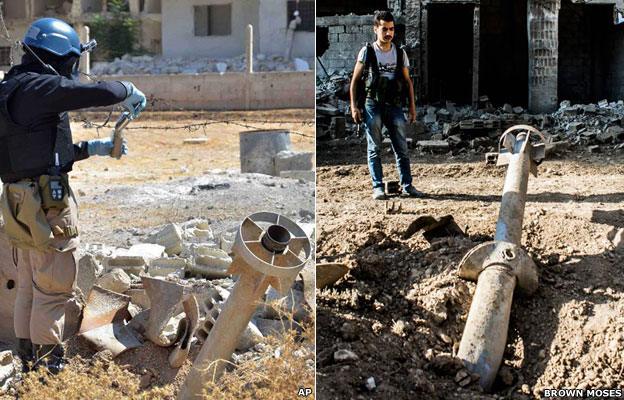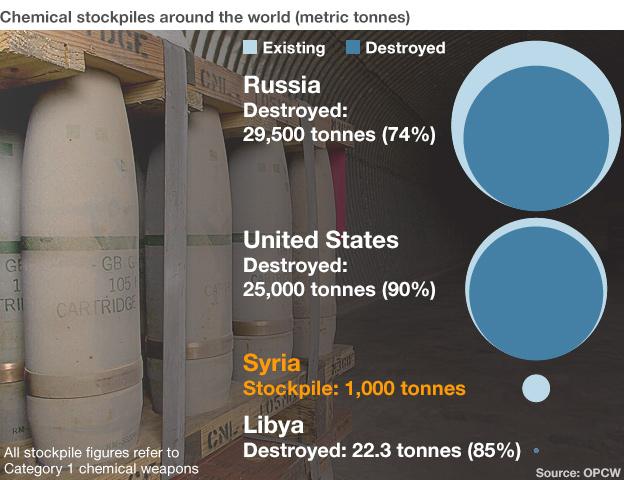Syrian chemical weapons set to be destroyed at sea
- Published

A plan has been hatched to destroy Syria's chemical weapons at sea using US Navy auxiliary vessel MV Cape Ray.
Industry sources told BBC Newsnight the plan will put a mobile destruction plant aboard that uses water to dilute the chemicals to safer levels.
The Organisation for the Prohibition of Chemical Weapons (OPCW) has set 31 December as its deadline for removing the toxic substances from Syria.
So far countries have shown a marked reluctance to take on the task.
Albania and other countries rumoured to be the destination for the chemicals have insisted they will not take them, despite the international community agreeing that disposal was one of the most urgent security problems in the world.
The process planned for on board MV Cape Ray - called hydrolysis - will produce an estimated 7.7m litres of effluent. The OPCW says this will be packed in 4,000 containers.
Security issues
The deadline for proposals as to who might then take this less toxic cargo, which is comparable to many common industrial by-products, is Friday.
It isn't just the disposal that's been a problem. Nobody is willing to escort the chemicals out of Syria, where the civil war rages in its third year, or to safeguard their security, so this task will now be performed by the Syrian army itself.
It is believed that the chemicals, all but 30 tonnes of which take the form of precursors - two or more of which have to be mixed to create the lethal agents - have been gathered in several marshalling areas by the Syrian army and amount to more than 600 tonnes. The other 30 tonnes consist of mustard gas.
Mark Urban discusses the problems raised by the process with Emily Maitlis
The fact that nerve agents such as sarin and VX do not exist in weaponised form has at least made the task of the OPCW, winners of this year's Nobel Peace Prize, a little easier.
Instead they have been stored by the Syrian regime as precursor chemicals - a measure that has the advantage both of maintaining the potency of the weapons when they are mixed, and preventing unauthorised use.
Packing materials and containers are currently being moved by the OPCW through Lebanon to Syria and within a couple of weeks it is believed that Syrian army convoys will start to move the chemicals, more than 200 standard freight containers' worth, to a Mediterranean port.
'Critical phase'
There are still a number of points that are unclear as the OPCW and US Navy develop their plan. Will the Cape Ray actually sail into Latakia or Tartus to collect the containers? Many think that some smaller vessels, not flying the US flag, may be needed to ferry the toxic cargo outside Syrian territorial waters.
And there are other questions too: What will happen if some of the shipments are attacked or even seized by rebels groups before they can be shipped? And if it does all go to plan, will it be possible to land the 7.7m litres of effluent produced by the destruction process without difficulty.
Up until now the OPCW's international teams have managed to keep up with the rapid schedule set by the agreement to disarm Syria of its chemical weapons. But the next phase will undoubtedly be the critical one.
